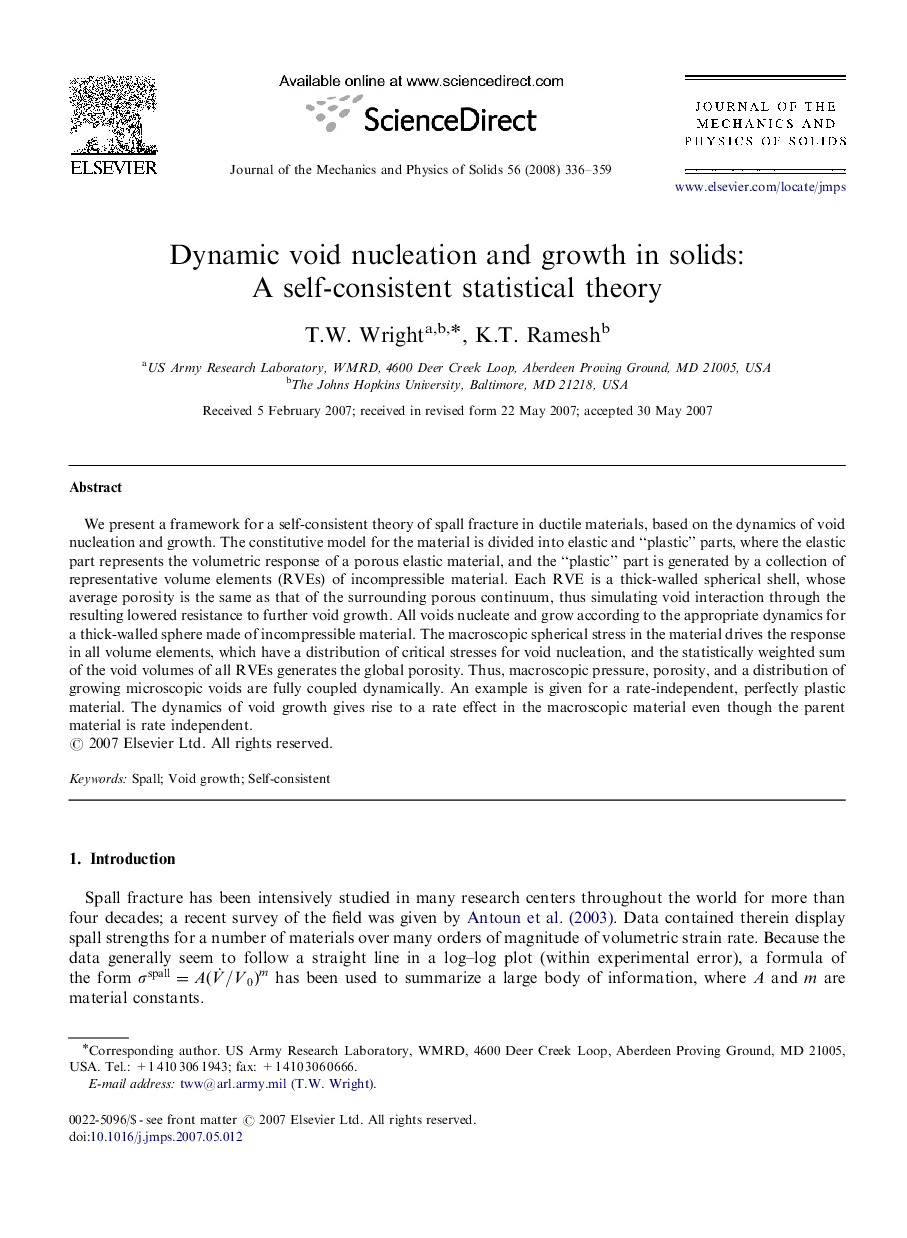| Article ID | Journal | Published Year | Pages | File Type |
|---|---|---|---|---|
| 800100 | Journal of the Mechanics and Physics of Solids | 2008 | 24 Pages |
We present a framework for a self-consistent theory of spall fracture in ductile materials, based on the dynamics of void nucleation and growth. The constitutive model for the material is divided into elastic and “plastic” parts, where the elastic part represents the volumetric response of a porous elastic material, and the “plastic” part is generated by a collection of representative volume elements (RVEs) of incompressible material. Each RVE is a thick-walled spherical shell, whose average porosity is the same as that of the surrounding porous continuum, thus simulating void interaction through the resulting lowered resistance to further void growth. All voids nucleate and grow according to the appropriate dynamics for a thick-walled sphere made of incompressible material. The macroscopic spherical stress in the material drives the response in all volume elements, which have a distribution of critical stresses for void nucleation, and the statistically weighted sum of the void volumes of all RVEs generates the global porosity. Thus, macroscopic pressure, porosity, and a distribution of growing microscopic voids are fully coupled dynamically. An example is given for a rate-independent, perfectly plastic material. The dynamics of void growth gives rise to a rate effect in the macroscopic material even though the parent material is rate independent.
